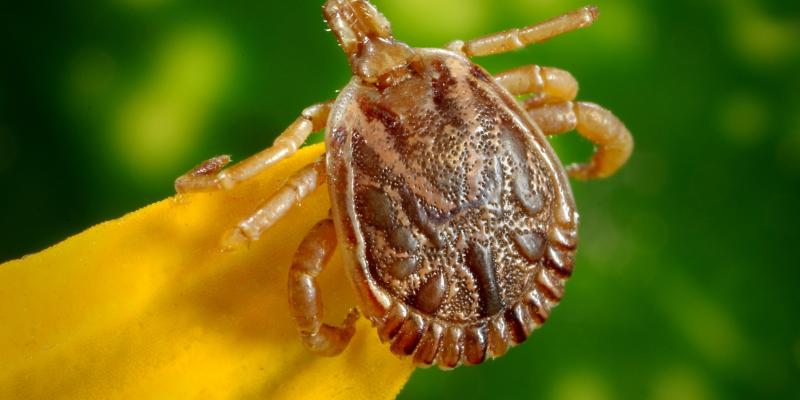Ticks are the carriers of hundreds of pathogens, including viruses, bacteria and fungi. Luckily, not every bit of these arachnids is dangerous, as only a certain percentage of them are infected. Unfortunately, when you become infected, its effects can be serious.
“The most dangerous tick-borne diseases include tick-borne encephalitis and lyme disease," points out doctor Aleksandra Gliniewicz, Head of the Laboratory of Medical Entomology and Pest Control at the National Institute of Hygiene (PZH).
According to data from the PZH, in 2012 there were more than 8,700 cases of lyme disease and 189 cases of tick-borne encephalitis.
Tick-borne encephalitis
This is a viral disease affecting the central nervous system. The infection can take place after being bitten by an infected tick, or after drinking raw and unpasteurised milk of infected animals. There is also a possibility of infection due to inhaling, e.g. dust contaminated with tick faeces.
This disease has two stages. Initially (for 4 to 14 days) it resembles flu – a sick person experiences a moderate fever (up to 38 degrees), feels weak, and suffers from headaches, as well as from neck, limb muscle and eyeball pain.
In some patients, when the virus gets to the brain, the second, neurological stage of the disease starts. This spells the onset of, among other things, a high fever (even up to 40 degrees), strong headaches, nausea and vomiting.
Such a condition requires hospitalising. Tick-borne encephalitis is treated with anti-inflammatory drugs, painkillers, anticonvulsants, antipyretics and infusion, as well as other liquids.
The PZH points out that in most cases, the course of the disease is rather mild. However, serious complications cannot be ruled out. The most common ones include paresis, permanent hearing impairment and psychical disorders.
Immunisation is the most effective prevention method.
Lyme disease
Lyme disease is caused by spirochaetes transmitted by ticks. The disease is transmitted to humans by the bite of infected ticks and also by crushing it, with the remains being rubbed into wounded skin.
As stated by the PZH, the disease is characterised by infecting skin, joints, the nervous system and the heart. Lesions can be also observed in other organs, such as organs of sight.
The most characteristic symptom, however, is the so-called erythema migrans – a red-blue, warm and painless rash, a bit brighter in the middle. This rash appears in 70-80% of infected people. Skin lesions are often accompanied by flu-like symptoms.
Symptoms in the second stage of the disease concern skin, the central and peripheral nervous systems, and the circulatory system. These can include, i.a., joint inflammations or myocarditis.
The rash reappears on skin, but its location in now independent of the place of the tick’s bite. At this stage a lesion in the form of a painless lump can appear on the earlobe, the pinna, a nipple or the scrotum.
Late symptoms include, i.a., acrodermatitis chronica atrophicans of limbs.
There is no vaccine against lyme disease. The best preventive measure is to avoid ticks and, when bitten, to promptly and carefully remove the insect from the skin.
Tick-borne diseases, aside from tick-borne encephalitis and lyme disease, include also tularaemia, human granulocytic anaplasmosis and babesiosis (piroplasmosis).
Antibiotic therapies constitute the basic treatment of lyme disease.









Comments (0)